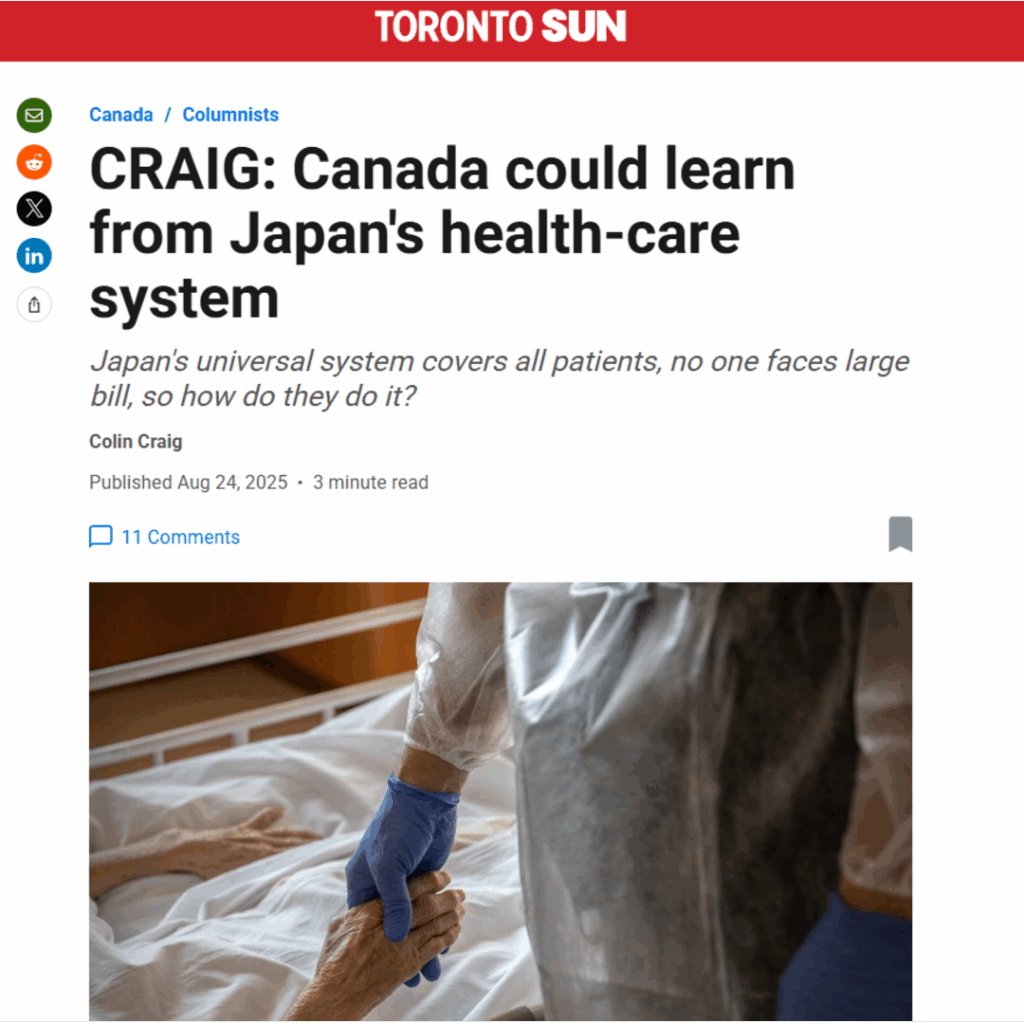In Japan, patients receive treatment right away — today if it’s an emergency or in the next couple weeks if it’s urgent. A month maximum. Unlike Canada, no one has to wait six months just to see a specialist or a year for surgery.
TORONTO SUN COLUMN: Canada could learn from Japan’s health-care system

Japan’s universal system covers all patients and no one faces a large bill after receiving health services. So how do they pull off this magic trick?
Our think-tank, SecondStreet.org, visited the Asian country earlier this year to make a documentary on their system and see what Canada could learn. There are two big takeaways:
— First, if we want to reduce wait times, we should do what Japan does and expand the supply of health care by encouraging people to open clinics and hospitals. In Japan, the government figures out how much it will pay for each type of surgery or procedure and then people can open health facilities and receive that rate each time they help a patient.
For example, if their federal government decides it will pay, say, $10,000 to do a knee replacement, local governments, non-profit clinics and for-profit clinics know that’s how much they’ll receive if they open a clinic and provide that surgery. The focus is not whether the facility is unionized or not or if it’s run by the government or not — they just care about providing quality care to patients.
In Canada, we find the opposite — ideology comes before patients. It’s extremely difficult to open a non-government surgical clinic or hospital in this country. In fact, when governments decide to pay a non-profit or for-profit health provider to deliver services to patients in the public system, many special interest groups protest. They want the state to maintain its monopoly, no matter how many patients suffer or die while on waiting lists.
If we want to reduce wait times, we have to be prepared to allow non-government providers to enter the Canadian market and help grow the supply of health care.
— Second, it can’t be overlooked that Japanese people live healthier lives in the first place. That’s why they have lower rates of disease, need fewer joint replacements, hospital visits, etc. Part of this could be due to the fact that Japanese people pay small user fees when they use the health system. This incentivizes patients to take better care of their health so that they use the system less and save money.
However, there are other government policies designed to nudge people toward healthy living. For instance, public schools often ban vending machines and don’t allow children to bring junk food to school. The government also has health staff visit workplaces and measure the waistlines of employees to determine who needs help improving their health.
The Canadian public would never find it acceptable for the government to measure people’s waistlines at work and many would reject the idea of user fees. But it would be beneficial for Canada to study how it could prevent health problems in the first place by encouraging healthy living without interfering in people’s lives.
One thing is certain: Canada should import more than just Toyotas and Nintendos from Japan. Their health-care system offers some good lessons for our nation.
Colin Craig is the president of SecondStreet.org, a Canadian think-tank.
This column was originally published in the Toronto Sun on August 23, 2025.
You can help us continue to research and tell stories about this issue by making a donation or sharing this content with your friends. Be sure to sign up for our updates too!


